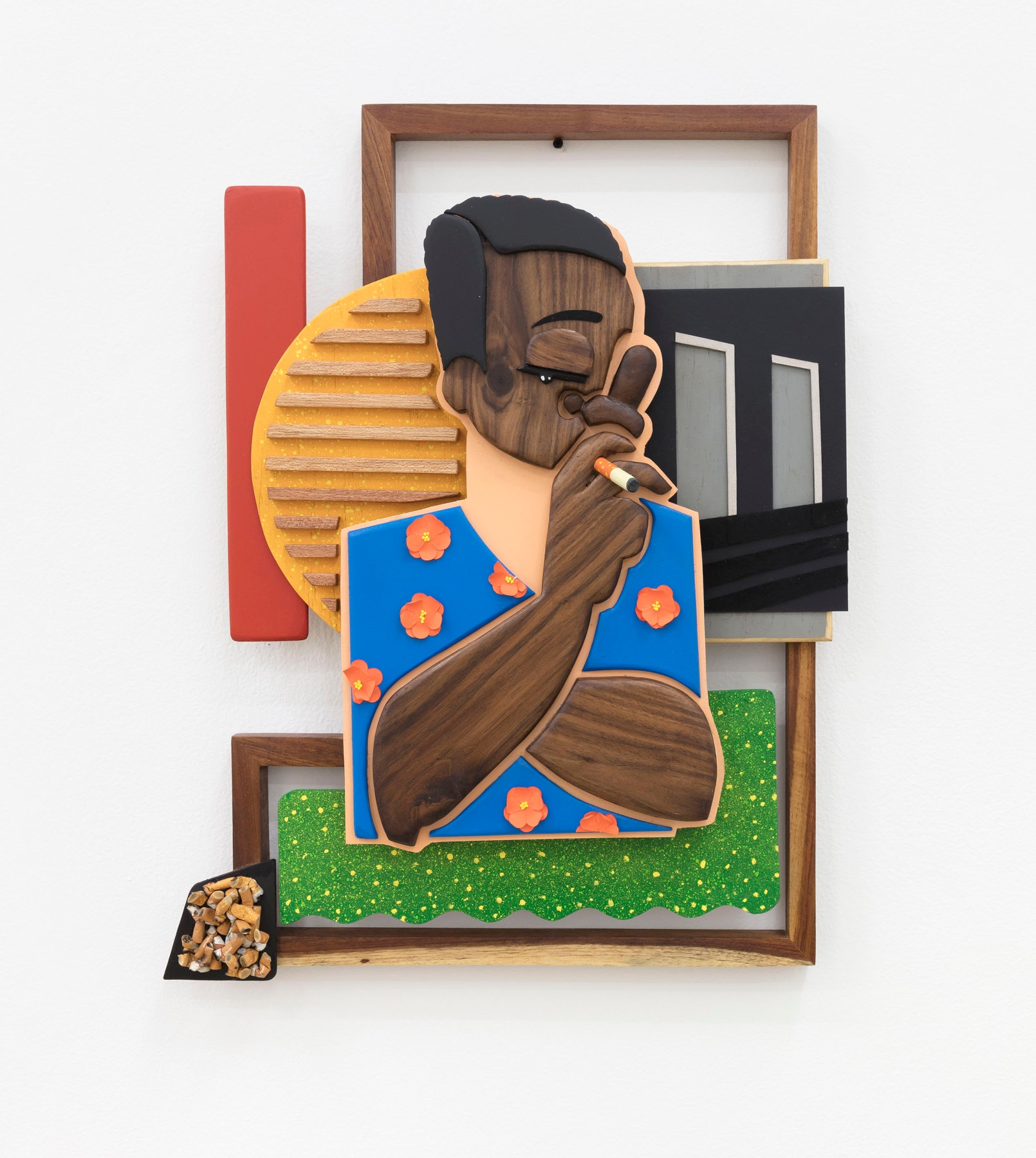Dada Khanyisa

Where many of the scenes and characters Khanyisa creates have about them, in the words of writer Lindiwe Mngxitama, a "resistant happiness" – collective good feeling despite (or in spite of) socio-political realities – Sad in Summer marks a subtle shift in tone. The work’s lone figure, carved from walnut wood, draws on a cigarette with eyes closed. Only the single tear that gathers beneath their eyelashes and the unemptied ashtray suggest their sadness (the floral-patterned shirt remains insensible to the mood of the moment). There is something about the scene – its title, perhaps, or its framing, the way the character is posed with apparent self-consciousness – that suggests an ambivalent shade of grief, one both felt and curated for a feed; a sadness to be witnessed on social media, performed for an unseen audience. There is little happiness here, yet the figure is no less defiant in their tears. Might theirs be a resistant sadness?
b.1991, Umzimkhulu
“The work I produce is about the black experience,” Dada Khanyisa says. “The weight of the content is based on the currency of memories. I enjoy focusing on what people neglect or take for granted.” The visual stories Khanyisa creates – in murals, sculpture and painting – more often depict scenes of intimacy and levity borrowed from everyday life. Following a self-styled attitude of nakanjani (by whatever means necessary), Khanyisa works across such various mediums as wood, rubber, acrylic paint, and found objects to compose their high-finish, graphic images. The artist’s distinct figuration echoes popular South African comic strips in style and form – indeed, many of Khanyisa’s sculpted paintings appear as comic book panels populated by their many characters. In this way, the artist suggests, they champion an accessible visual language, a street-wise aesthetic that riffs off black South African pop culture and the collective voyeurism social media inspires.